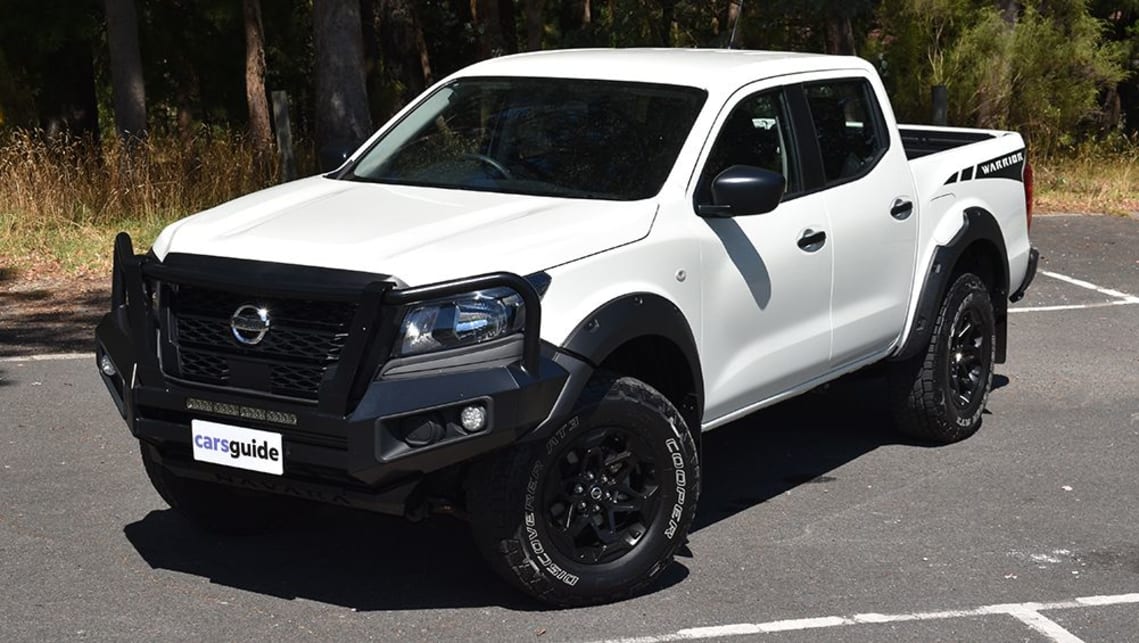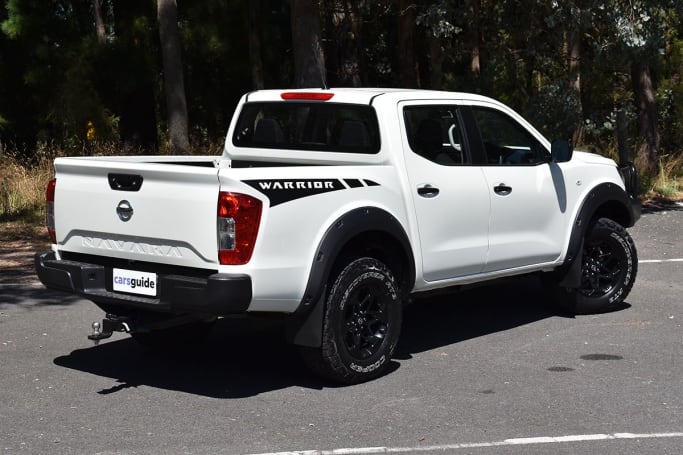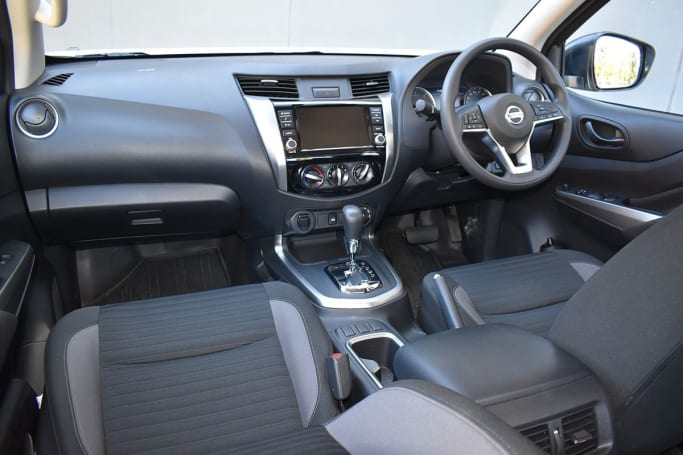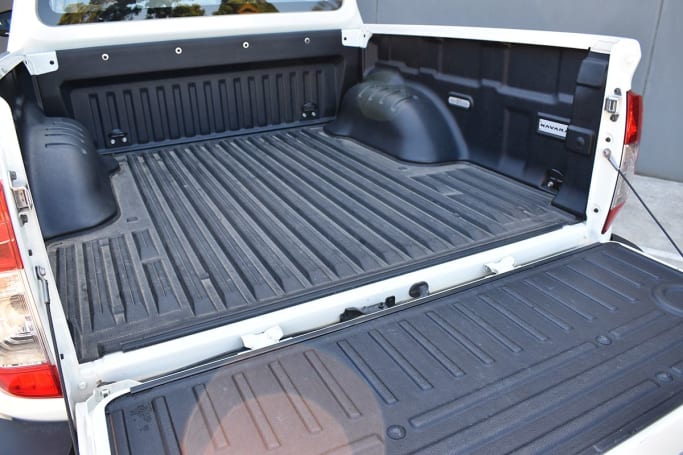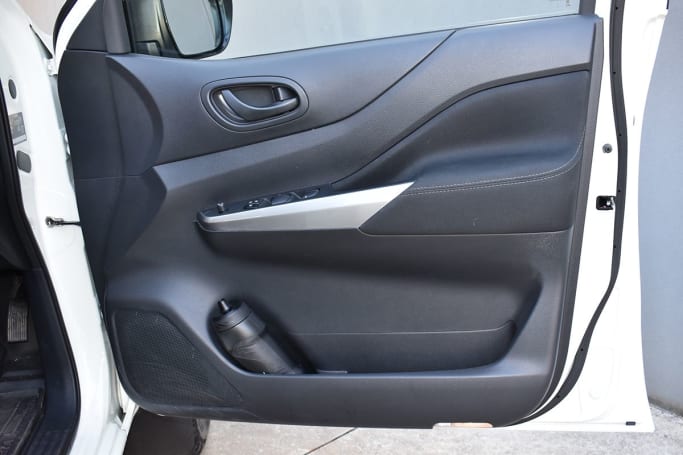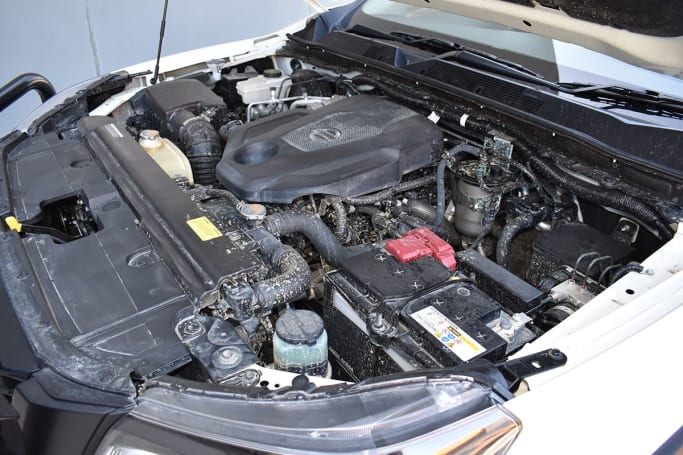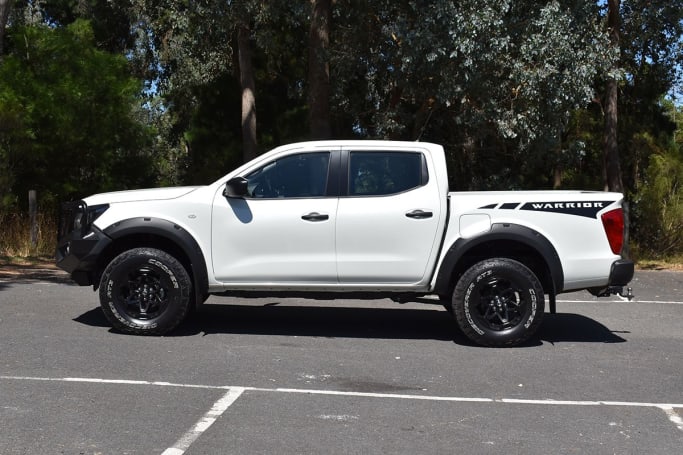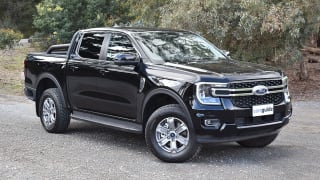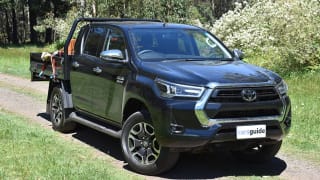The SL Warrior, like its sibling, is available only as a 4x4 dual cab ute. It comes standard with the Navara’s familiar 2.3-litre twin-turbo four-cylinder diesel and a choice of six-speed manual gearbox ($58,000) or seven-speed torque converter automatic, like our example, for a list price of $60,500, plus on-road costs.
That’s $11,400 more than a standard SL Navara and for that extra spend you get a bespoke package of off-road equipment, starting with unique body decals and 17-inch alloys wearing Cooper Discoverer AT3 all-terrain tyres plus a full-size alloy spare.
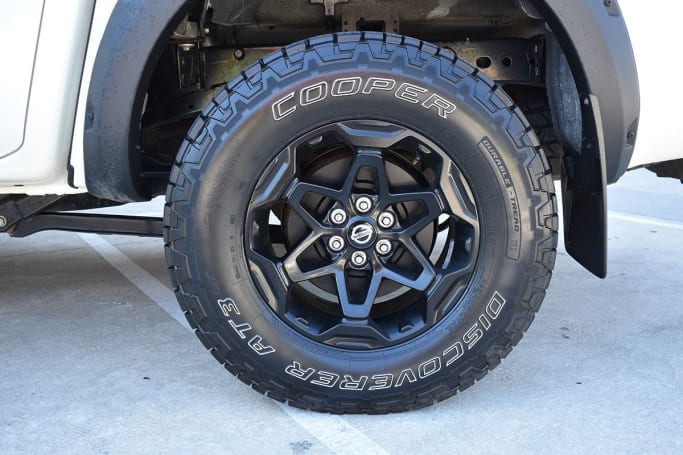
There's also a winch-compatible hooped bull-bar with integrated LED light-bar, black Navara-branded underbody bash-plate, wheel-arch flares, load tub-liner, 3500kg tow-bar and rubber floor mats.
Big changes underneath include a 40mm increase in ride height to 260mm. This substantial gain in ground clearance (25mm from tyres, 15mm from springs) results in the approach angle improving from 32 to 36 degrees and virtually no change in departure angle with a tow-bar fitted.
The suspension has been retuned with new springs, shock absorbers and jounce rubbers. The new front spring rate provides more front-end support and less body roll while the revised shocks produce improved compliance, noise isolation and reduced ‘float’ when towing and/or carrying loads. These changes also bring a useful 100kg increase in its GVM rating.
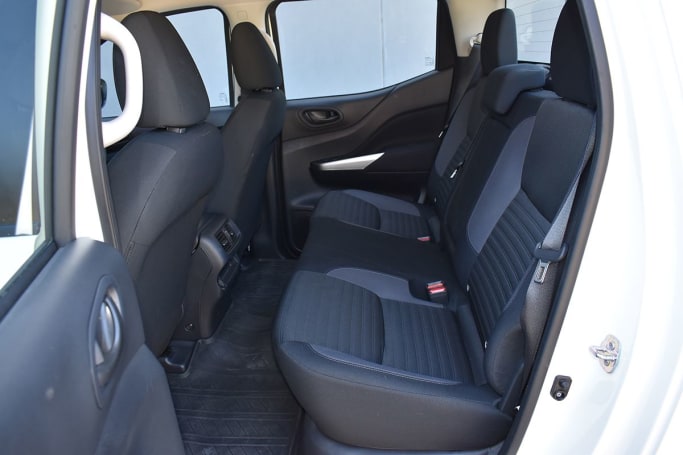
In addition to Premcar’s hardware, the SL’s standard equipment list includes automatic headlights with halogen DRLs, tailgate assist, a rear bumper step, a reversing camera and rear diff lock.
Inside, there’s a six-speaker multimedia system with 8.0-inch touchscreen and multiple connectivity including Apple CarPlay/Android Auto, plus four USB ports, two 12-volt accessory outlets, 7.0-inch instrument cluster display with digital speedo, and more.
So, although based on the entry-level model, it does offer numerous useful features. The optional 'Pearl White' metallic paint on our test vehicle adds $650.


